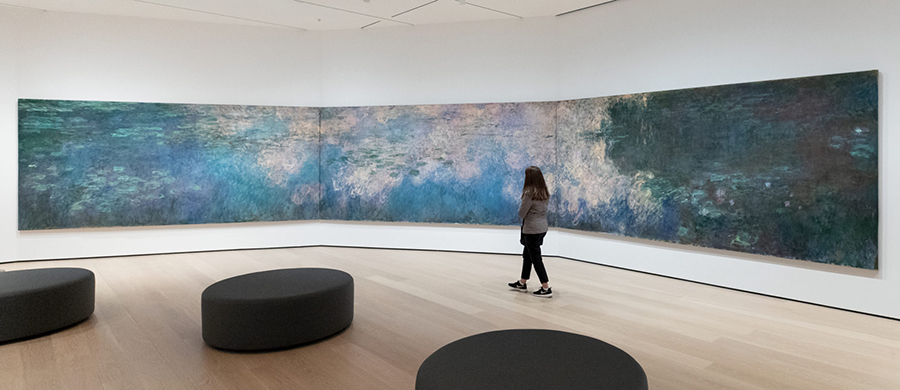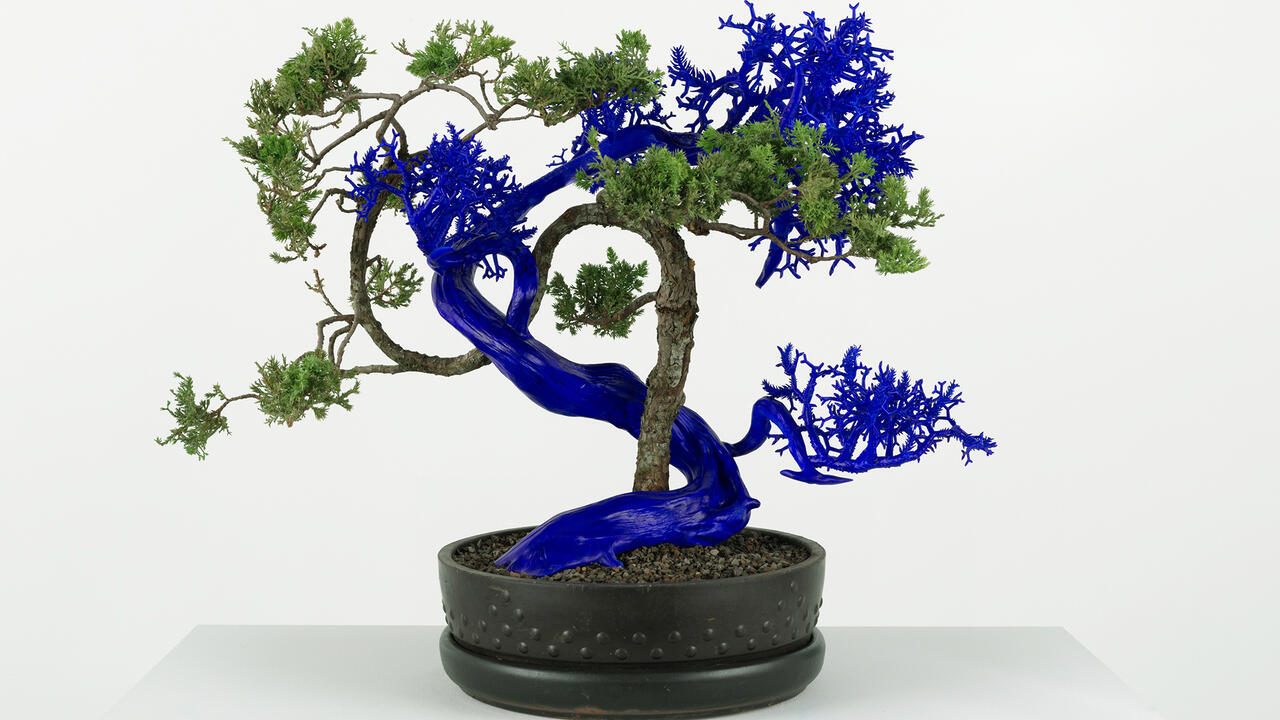What the New MoMA Misunderstands About Pablo Picasso and Faith Ringgold
Whether pairing the two inspires consternation or praise depends largely on how we conceive of the purpose of the Museum itself
Whether pairing the two inspires consternation or praise depends largely on how we conceive of the purpose of the Museum itself

Next week, after long anticipation and a four-month hiatus, the Museum of Modern Art in New York will unveil its latest renovation – and expansion. Its new quarters are capacious to be sure, and the museum has put them to good use for an experimental rehang of its permanent collection featuring more women, more artists of colour, more historically-overlooked artists and more artists from outside New York City. In this, the institution that defined the modern museum – and a good deal of modern art – has undertaken to redefine itself and its purpose. Makeovers are tough for a nonagenarian, and the results are mixed, if mostly quite welcome. Despite MoMA’s progressive intentions, however, questions remain about what revamped purpose its expansion announces – especially on the levels of education, curatorial method and economic positionality.

Although the permanent collection galleries proceed largely in chronological order, each is arranged according to a different theme, the variety of which suggests the workings of curatorial authorship in pleasantly idiosyncratic variety. Each is like its own exhibition, linked to the others and yet structured independently. There are monographs of single artists (Henri Matisse, Constantin Brancusi) or works (Claude Monet’s Water Lilies,1914–26), snapshots of a time or place (‘Circa 1913’, ‘Paris 1920s’, ‘In and Around Harlem’), motif-based galleries (‘Machines, Mannequins, and Monsters’, ‘From Soup Cans to Flying Saucers’), and those exploring technique (‘Stamp, Scavenge, Crush’) or format (‘Readymade in Paris and New York’, ‘The Art of the Multiple’). Three galleries are devoted to art and war.
New wall texts mark a shift in the way the Modern addresses its viewers. In an effort to make the work more accessible to non-specialists, the museum avoids technical terms and the language of ‘-isms’ as much as possible. While the result is sometimes refreshing (arrivederci to the misnomer ‘Arte Povera’), just as often the actual terminology is so thinly veiled that the effort to avoid it comes across as patronizing – ‘Idea Art’ for a gallery devoted to conceptualism, for example. Galleries entitled ‘Action Painting I & II’ simply trade ‘abstract expressionism’ for Harold Rosenberg’s more heroic but equally tendentious moniker. The avoidance behaviour is not entirely uniform, however. ‘De Stijl’ and ‘Fluxus’ are retained, inexplicably, despite their notorious difficulty (to pronounce and to define, respectively). In any case, it now appears that a new visitor to the Modern can tour the permanent collection in some detail without ever learning the words ‘dada’, ‘minimalism’, ‘suprematism’ or ‘futurism’.

There are new additions as thrilling as they are necessary, like the long-overdue ‘Early Film and Photography’ gallery, studded with uncanny images from scientific and medical research. More idiosyncratic supplements bring delightful surprises, like a gallery of artist’s books and prints from the Russian avant-garde artists Olga Rozanova and Natalia Goncharova. Some galleries make unexpected connections, as in the arrangement of four artists who pioneered modularity, rule-based procedure and chance operations within the angular rigors of geometric abstraction. These four – Ellsworth Kelly’s Colors for a Large Wall (1951), Carmen Herrera’s Untitled (1952), Lygia Pape’s Orange (1955) and François Morellet’s Random Distribution of 40,000 Squares Using the Odd and Even Numbers of a Telephone Directory, 50% Blue, 50% Red (1960) – shake up received narratives of the period.
Although thematic criteria can open paths out of curatorial culs-de-sac, less successful are surprises out of time and place that erupt within the more traditionally historiographical galleries. The most notable of these, in a gallery of early cubism, is the pairing of Picasso’s Les Demoiselles d’Avignon (1907) with Faith Ringgold’s American People Series #20: Die (1967). The Ringgold startles for many reasons, one of which is that it is the brashest juxtaposition in the rehang. Other eruptions of this ilk, like Louise Bourgeois’s Quarantania I (1947–53) in the same gallery or Alma Thomas’s Fiery Sunset (1973) in the Matisse room, are less controversial because less memorable. As one-offs, these wildcard additions lack the contextual support to buttress and specify whatever insight might have justified their placement, which risks aesthetic and conceptual injury to both parties. The most disappointing example must be the conscription of Judith Scott’s Untitled (2002) to the Fluxus gallery ‘At the Border of Art and Life’. Scott was an extraordinary artist whose practice – usually found-objects wrapped in colourful yarn – combined elements of craft tradition, fibre arts, post-surrealist objet trouvé and informe sculpture. The curators’ justification for aligning her work with Fluxus – an allegedly shared ‘spirit of transformation and play’ – is brittle. It arouses the suspicion that Scott, who was deaf, nonverbal and had Down syndrome, has been instrumentalized to check diversity boxes without taking her work (or indeed the goal of diversification) very seriously.

The Ringgold-Picasso pairing has garnered the attention that it begs of its audience, but whether it inspires consternation or praise depends largely on how we conceive of the purpose of this gallery and, by extension, the Museum itself. In one sense the comparison comes readymade. Ringgold was schooled in the intricacies of French modernism as a graduate student at City College of New York, and it is no accident that passages of Die recall the pink-and-yellow sections and interlocking blues and whites of the Demoiselles. But apropos of painting that protests contemporaneous violence, the Ringgold looks less to Demoiselles than to Picasso’s later Guernica (1937) – hence its horizontality, its horror, its mural size and grayscale background (both Picassos lived at MoMA at the time). Throughout a riotous composition that explicitly cites Guernica, Die makes exclusive use of cloisonnist planes of flat colour, eschewing the disarticulated passage (shaded transitions ambiguously representing a volume’s recession into depth) that is the hallmark of early cubist analytics.
Sequence matters here, too. The reason why individual works by Aleksandr Rodchenko and Piet Mondrian make sense in the impressive exhibition of South American abstraction ‘Sur moderno: Journeys of Abstraction – The Patricia Phelps de Cisneros Gift’ is that Lygia Clark, Jesús Rafael Soto and others were deeply invested in the legacies of these specific artists. Rodchenko’s Spatial Construction no. 12 (c.1920) and Mondrian’s Broadway Boogie-Woogie (1942–43) establish precedent for the later Brazilian work that is the focus of the show, enriching our historical understanding. The question ‘Where did this come from?’ is possible to address with a few exemplars, whereas the question ‘What did this lead to?’ will require a thousand. Ancestors make a better supporting cast than descendants.

If the raison d’etre of the Demoiselles gallery is to engineer a transgenerational encounter, then its curators have partly achieved their aim, although the Ringgold would certainly benefit from some contextualizing canvases. On the other hand, if the purpose of the gallery is to educate viewers about the history of modern painting, then the juxtaposition is a distraction that comes at the cost of any substantive engagement with the complexities of cubist development. Already it has sapped attention from the rehang’s presentation of cubism itself, which, in being centred almost entirely on painting, remains quite conservative. If the juxtaposition was intended to acknowledge the troubling race and gender aspects of Demoiselles – the appropriation of the visual culture of colonized Africans in a depiction of unclothed female sex workers – then MoMA has no shortage of relevant material to draw from, beginning with artefacts of its own myopic, extremely controversial 1989 exhibition ‘“Primitivism” in 20th Century Art: Affinity of the Tribal and the Modern’, an object lesson in how not to do cross-cultural comparison.
The encounter of Die and Demoiselles is fruitful and inspired, but it should get its own gallery with appropriate contextualizing material. Indeed, the collision is so seismic – and the Ringgold so large and saturated – that viewers scarcely notice the other canvases in the room. There is, after all, the urgency of Ringgold’s subject matter. Who, in 2019, when faced with such a powerful depiction of a racialized mass shooting, could possibly care about the finer points of spatial illusionism? There is no contest here. Ringgold solicits a politics so searing that contemplating Picasso’s Ma Jolie (1911–12) verges on indecency. But the gallery in question is none other than the cubism room at the Museum of Modern Art. If not here, then where?

The relationship between architecture, design and art is a theme that recurs throughout the rehang – a knowing emphasis that is doubly self-reflexive for a Museum with so much self-reflexive art. A room contrasting El Lissitzky’s interactive Abstract Cabinet (1928) with the linear paths of MoMA’s earlier iterations and Frank Lloyd Wright’s Solomon R. Guggenheim Museum, New York (1943–59) are particularly strong in this regard. In the history of 20th-century modernism, however, self-reflexivity opened the door to institutional critique – the artistic investigation of broader forces that condition our experience of cultural institutions. Major events of this tendency occurred in fact at MoMA; Hans Haacke’s MoMA Poll (1970) – not in the museum’s collection – questioned the politics of the powerful people who ran the Modern all those decades ago. Now, as the museum unveils its newer, ‘woker’ self to the world, trading on inclusive curation to bolster its progressive credentials, the time has come again to interrogate the power structure of the Museum of Modern Art.
The movement against the unsavoury investments of corporate benefactors and museum trustees has been gaining steam for years, and it was only a matter of time before MoMA became a target. In the wake of successful campaigns to unseat a trustee at the Whitney Museum this year and to cut ties with opioid-spiked Sackler cash at the National Portrait Gallery (and elsewhere), a new protest movement against MoMA’s entanglement in private prison profiteering threatens to mar the pomp of its expansion celebration. Thus far the museum seems to be hoping the controversy will blow over, but even on art historical grounds alone, MoMA ought to know that an up-to-date curatorial programme will not disguise a funding system so out of step with the cultural moment. Institutional critique, like the radical avant-gardes before it, taught us look beyond the frame. To paraphrase Walter Benjamin: Rather than asking ‘What is the attitude of a museum to the political and economic relations of its time?’, we should instead ask: ‘What is its position within them?’

MoMA’s first building on its current site opened its doors in the New Deal era, and today a similar age may be on the rise. In a 1939 address at the museum’s opening, President Franklin Delano Roosevelt praised the WPA artist–art workers employed by the Works Progress Administration, a subsidiary of the New Deal. WPA programs included unprecedented funding for art and culture, which not only provided unemployment relief, but freed individuals and institutions alike from the whims and agendas of the capitalist class. Today, as Naomi Klein and others have pointed out, the best versions of the proposed Green New Deal include similarly robust federal support for art. The prospect of a 21st century WPA may ultimately rescue art institutions from their dependency on banks and billionaires, but in the meantime, it is high time museum boards heed protesters’ call and purge themselves of the worst offenders. If not, all the good work of more enlightened curation will be seen, correctly, as so much art-washing – mere instruments to launder the funds and reputations of a globally predatory elite.
Before long, the people of MoMA – its artists, administrators and curators – will have to decide what and who the museum is for. Defining a new purpose won’t be easy, but like FDR once said, they cannot refrain nor can they properly be excused.
The Museum of Modern Art, New York, USA, reopens to the public on 21 October 2019.





















